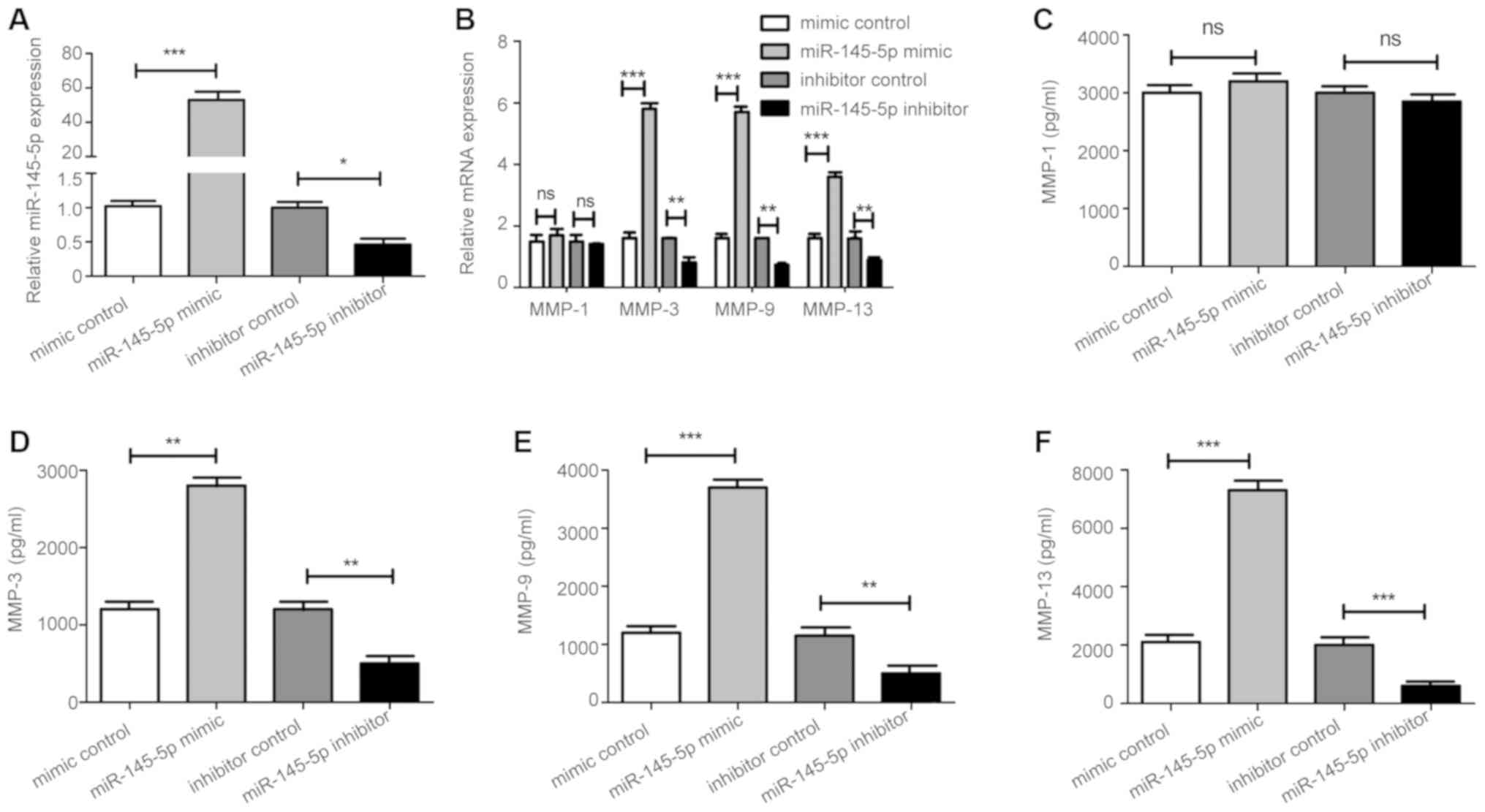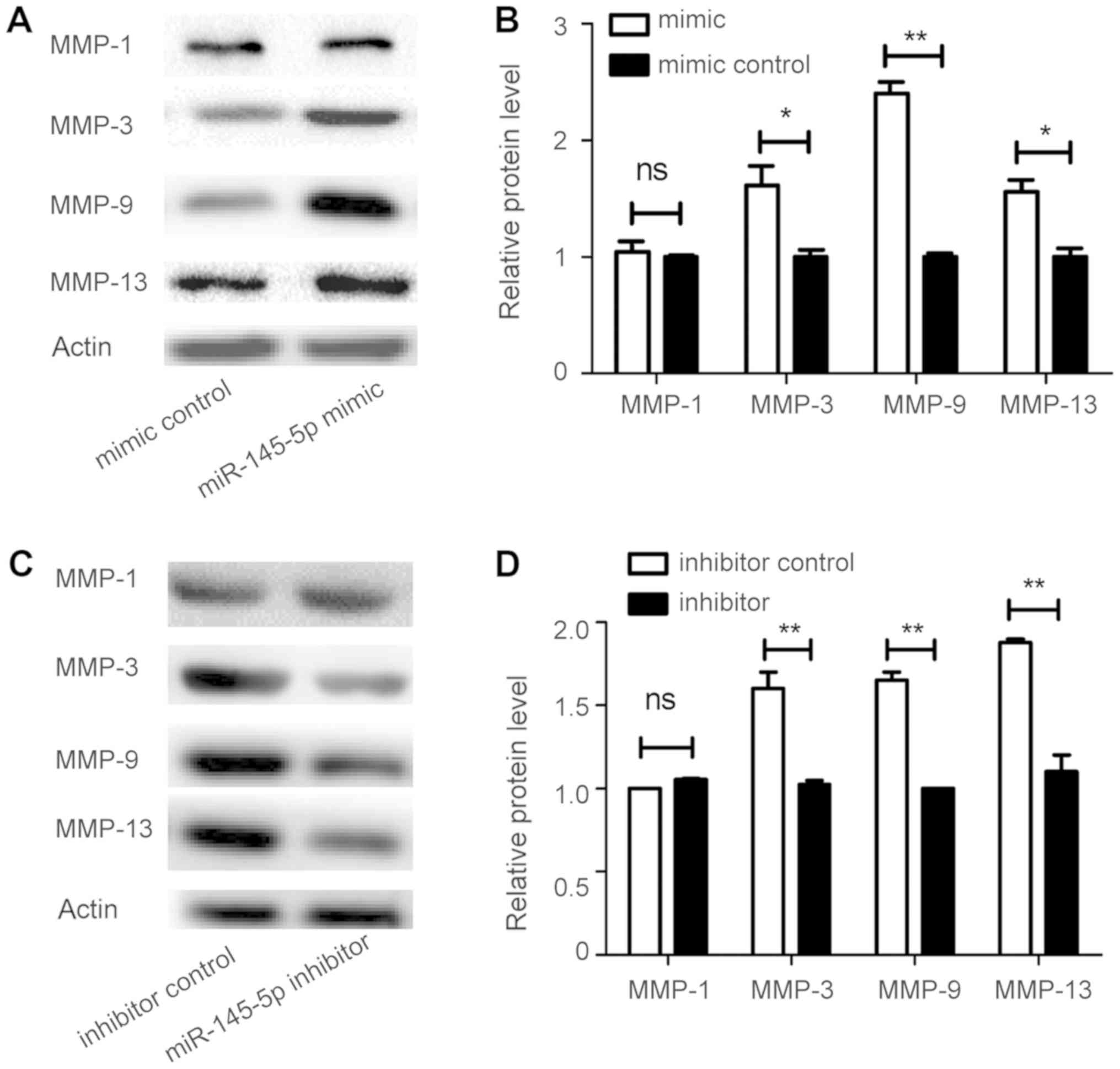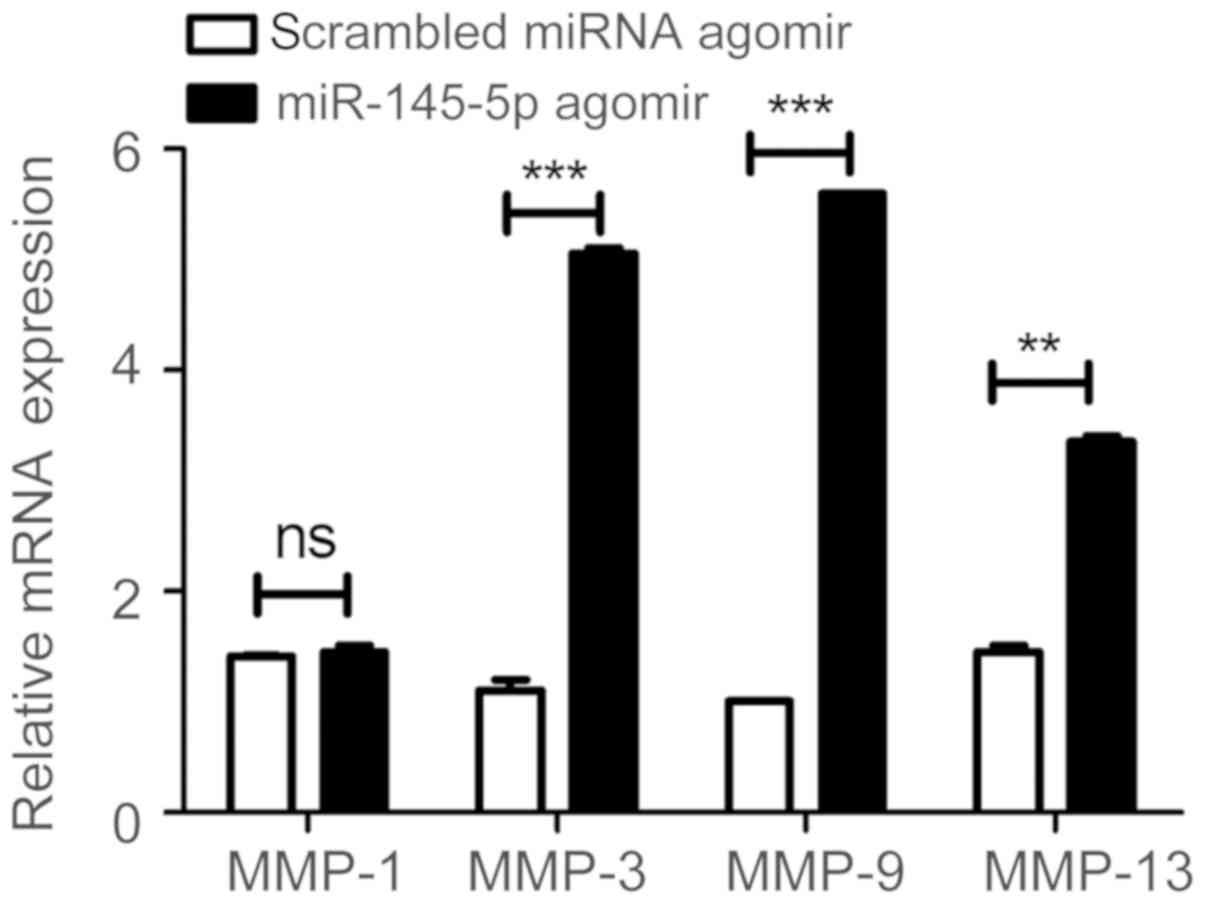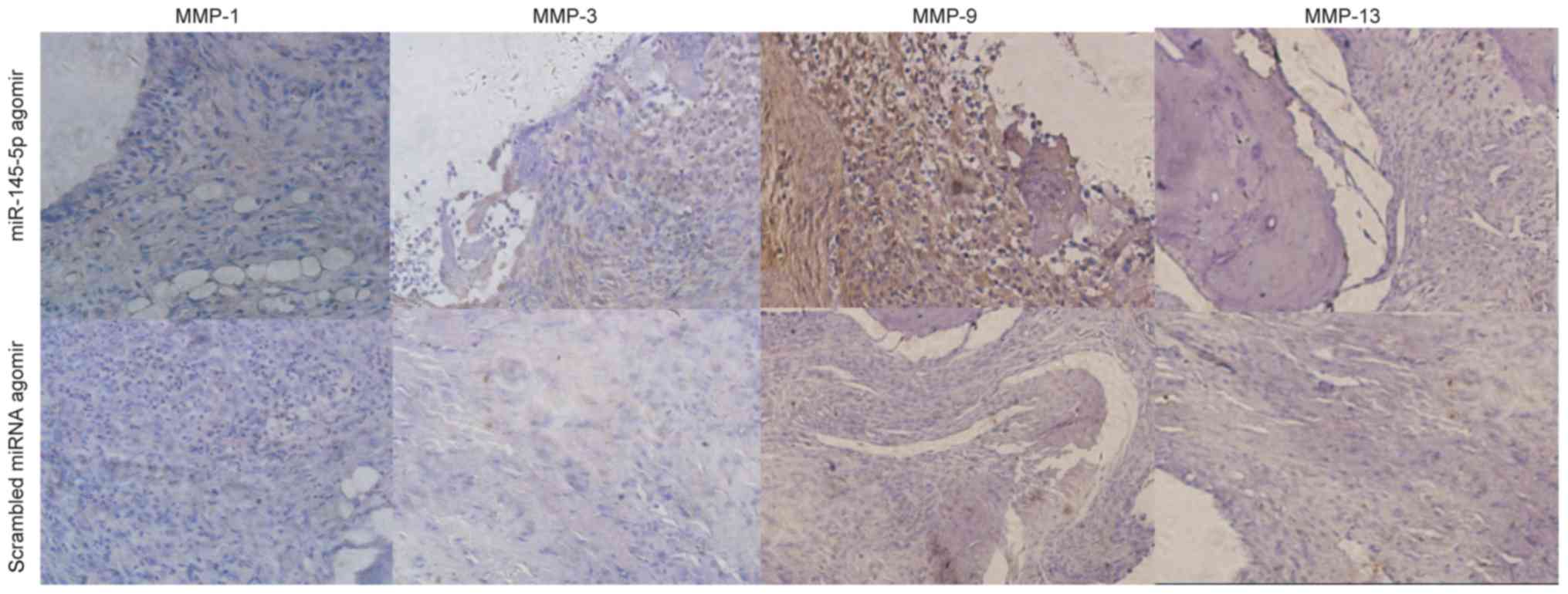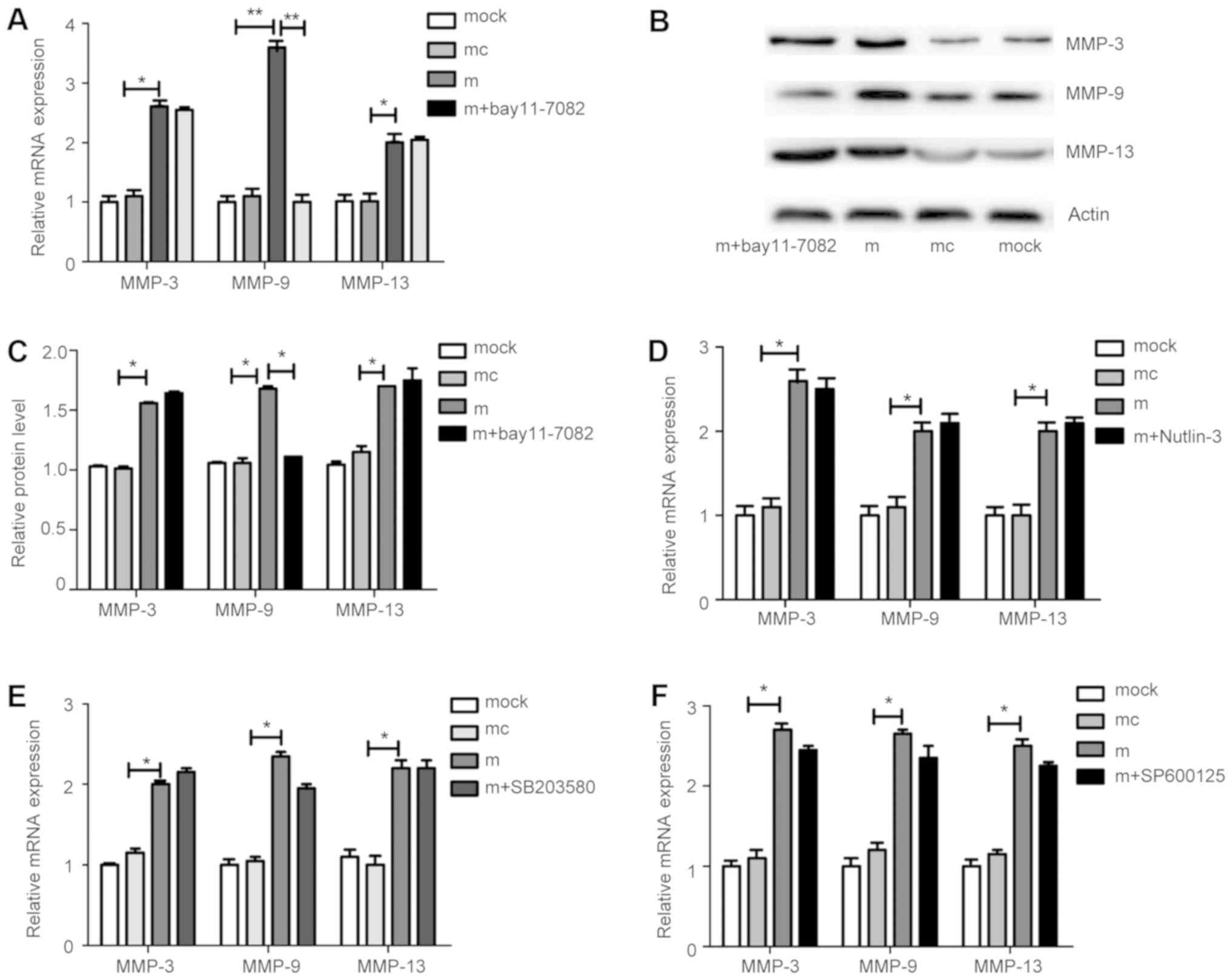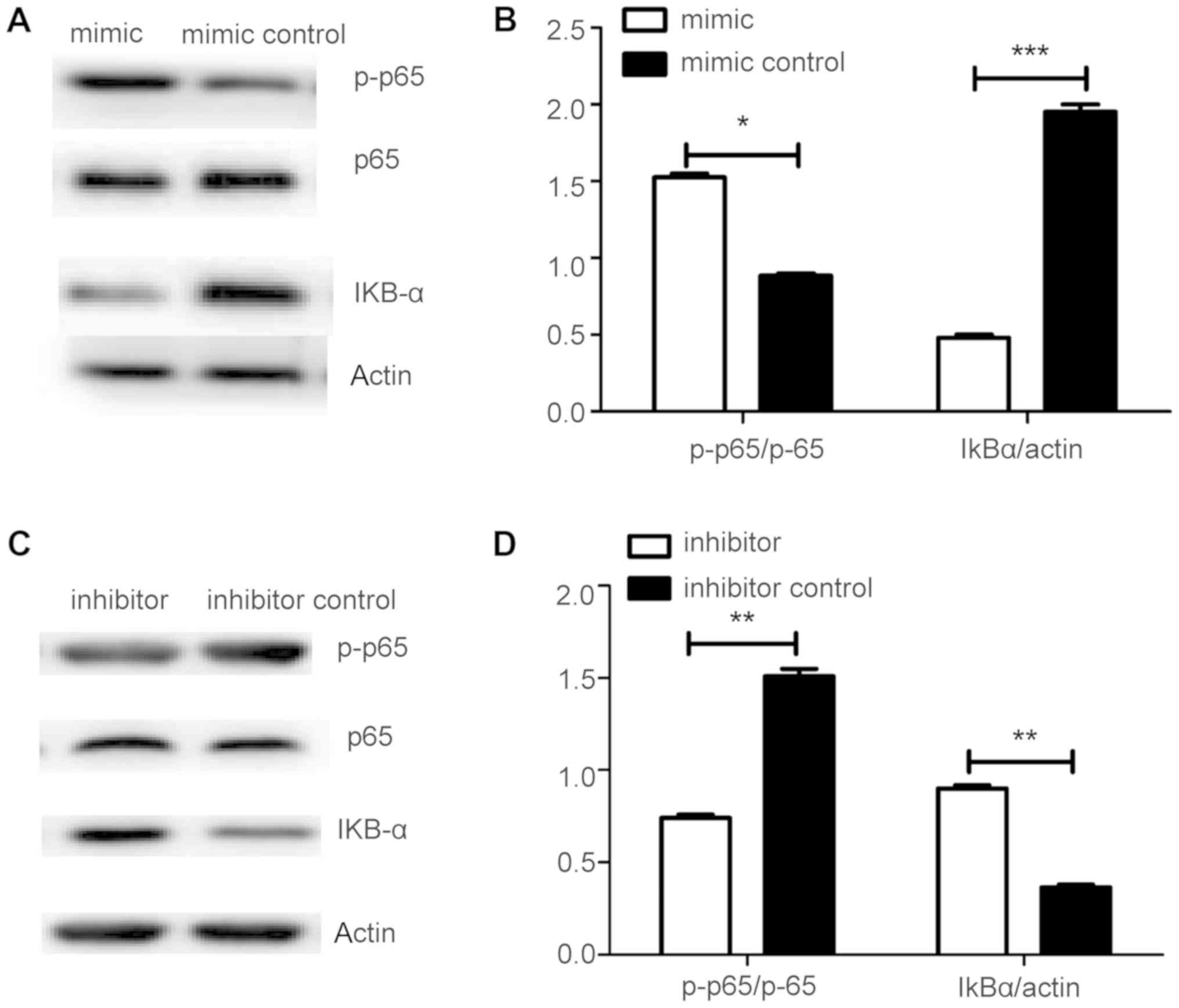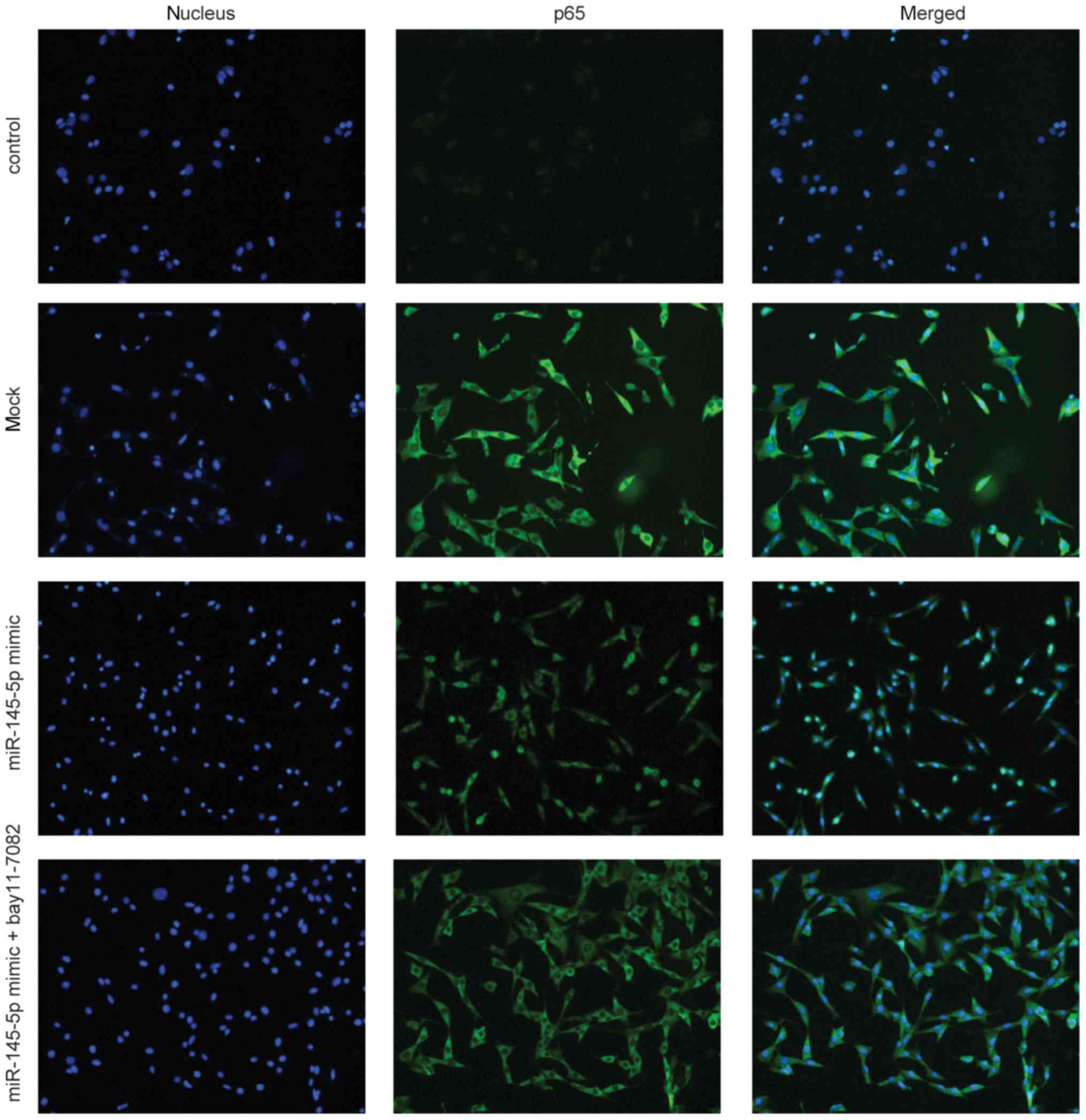|
1
|
McInnes IB and O'Dell JR:
State-of-the-art: Rheumatoid arthritis. Ann Rheum Dis.
69:1898–1906. 2010. View Article : Google Scholar : PubMed/NCBI
|
|
2
|
Cunnane G, Fitzgerald O, Beeton C, Cawston
TE and Bresnihan B: Early joint erosions and serum levels of matrix
metalloproteinase 1, matrix metalloproteinase 3, and tissue
inhibitor of metalloproteinases in rheumatoid arthritis. Arthritis
Rheum. 44:2263–2274. 2001. View Article : Google Scholar : PubMed/NCBI
|
|
3
|
Murphy G, Knäuper V, Atkinson S, Butler G,
English W, Hutton M, Stracke J and Clark I: Matrix
metalloproteinases in arthritic disease. Arthritis Res. 4 (Suppl
3):S39–S49. 2002. View
Article : Google Scholar : PubMed/NCBI
|
|
4
|
Schanen BC and Li X: Transcriptional
regulation of mammalian miRNA genes. Genomics. 97:1–6. 2011.
View Article : Google Scholar : PubMed/NCBI
|
|
5
|
Tavasolian F, Abdollahi E, Rezaei R,
Momtazi-Borojeni AA, Henrotin Y and Sahebkar A: Altered expression
of microRNAs in rheumatoid arthritis. J Cell Biochem. 119:478–487.
2018. View Article : Google Scholar : PubMed/NCBI
|
|
6
|
Stanczyk J, Ospelt C, Karouzakis E, Filer
A, Raza K, Kolling C, Gay R, Buckley CD, Tak PP, Gay S and Kyburz
D: Altered expression of microRNA-203 in rheumatoid arthritis
synovial fibroblasts and its role in fibroblast activation.
Arthritis Rheum. 63:373–381. 2014. View Article : Google Scholar
|
|
7
|
Stanczyk J, Pedrioli DM, Brentano F,
Sanchez-Pernaute O, Kolling C, Gay RE, Detmar M, Gay S and Kyburz
D: Altered expression of microRNA in synovial fibroblasts and
synovial tissue in rheumatoid arthritis. Arthritis Rheum.
58:1001–1009. 2008. View Article : Google Scholar : PubMed/NCBI
|
|
8
|
Chen Y, Wang X, Yang M, Ruan W, Wei W, Gu
D, Wang J, Guo X, Guo L and Yuan Y: miR-145-5p increases osteoclast
numbers in vitro and aggravates bone erosion in collagen-induced
arthritis by targeting osteoprotegerin. Med Sci Monit.
24:5292–5300. 2018. View Article : Google Scholar : PubMed/NCBI
|
|
9
|
Livak KJ and Schmittgen TD: Analysis of
relative gene expression data using real-time quantitative PCR and
the 2(-Delta Delta c(T)) method. Methods. 25:402–408. 2001.
View Article : Google Scholar : PubMed/NCBI
|
|
10
|
Xia Y: The role of RLX/RXFP1, MMP9/MMP13
and RANKL/OPG in arthritic cartilage and bone destruction and
Chinese medicine treatment [d]. Huazhong Univ Sci Technol; 2012
|
|
11
|
Gravallese EM, Darling JM, Ladd AL, Katz
JN and Glimcher LH: In situ hybridization studies of stromelysin
and collagenase messenger RNA expression in rheumatoid synovium.
Arthritis Rheum. 34:1076–1084. 1991. View Article : Google Scholar : PubMed/NCBI
|
|
12
|
Nakada M, Nakamura H, Ikeda E, Fujimoto N,
Yamashita J, Sato H, Seiki M and Okada Y: Expression and tissue
localization of membrane-type 1, 2, and 3 matrix metalloproteinases
in human astrocytic tumors. Am J Pathol. 154:417–428. 1999.
View Article : Google Scholar : PubMed/NCBI
|
|
13
|
Dai SM, Shan ZZ, Nishioka K and Yudoh K:
Implication of interleukin 18 in production of matrix
metalloproteinases in articular chondrocytes in arthritis: Direct
effect on chondrocytes may not be pivotal. Ann Rheum Dis.
64:735–742. 2005. View Article : Google Scholar : PubMed/NCBI
|
|
14
|
Giannelli G, Erriquez R, Iannone F,
Marinosci F, Lapadula G and Antonaci S: MMP-2, MMP-9, TIMP-1 and
TIMP-2 levels in patients with rheumatoid arthritis and psoriatic
arthritis. Clin Exp Rheumatol. 22:335–338. 2004.PubMed/NCBI
|
|
15
|
Ni S, Li C, Xu N, Liu X, Wang W, Chen W,
Wang Y and van Wijnen AJ: Follistatin-like protein 1 induction of
matrix metalloproteinase 1, 3 and 13 gene expression in rheumatoid
arthritis synoviocytes requires MAPK, JAK/STAT3 and NF-κB pathways.
J Cell Physiol. 234:454–463. 2018. View Article : Google Scholar : PubMed/NCBI
|
|
16
|
Xia H, Qi Y, Ng SS, Chen X, Li D, Chen S,
Ge R, Jiang S, Li G, Chen Y, et al: microRNA-146b inhibits glioma
cell migration and invasion by targeting MMPs. Brain Res.
1269:158–165. 2009. View Article : Google Scholar : PubMed/NCBI
|
|
17
|
Wu T, Xie M, Wang X, Jiang X, Li J and
Huang H: miR-155 modulates TNF-α-inhibited osteogenic
differentiation by targeting SOCS1 expression. Bone. 51:498–505.
2012. View Article : Google Scholar : PubMed/NCBI
|
|
18
|
Akhtar N, Rasheed Z, Ramamurthy S,
Anbazhagan AN, Voss FR and Haqqi TM: MicroRNA-27b regulates the
expression of matrix metalloproteinase 13 in human osteoarthritis
chondrocytes. Arthritis Rheum. 62:1361–1371. 2010. View Article : Google Scholar : PubMed/NCBI
|
|
19
|
Hammaker D, Sweeney S and Firestein GS:
Signal transduction networks in rheumatoid arthritis. Ann Rheum
Dis. 62 (Suppl 2):ii86–ii89. 2003. View Article : Google Scholar : PubMed/NCBI
|
|
20
|
Miagkov AV, Kovalenko DV, Brown CE,
Didsbury JR, Cogswell JP, Stimpson SA, Baldwin AS and Makarov SS:
NF-kappaB activation provides the potential link between
inflammation and hyperplasia in the arthritic joint. Proc Nat Acad
Sci USA. 95:13859–13864. 1998. View Article : Google Scholar : PubMed/NCBI
|
|
21
|
He C: Molecular mechanism of
transcriptional activation of human gelatinase B by proximal
promoter. Cancer Lett. 106:185–191. 1996. View Article : Google Scholar : PubMed/NCBI
|
|
22
|
Goon Goh FG, Sloss CM, Cunningham MR,
Nilsson M, Cadalbert L and Plevin R: G-protein-dependent and
-independent pathways regulate proteinase-activated receptor-2
mediated P65 NFkappaB serine 536 phosphorylation in human
keratinocytes. Cell Signal. 20:1267–1274. 2008. View Article : Google Scholar : PubMed/NCBI
|
|
23
|
Li Q and Verma IM: NF-kappaB regulation in
the immune system. Nat Rev Immunol. 2:725–734. 2002. View Article : Google Scholar : PubMed/NCBI
|
|
24
|
van de Loo FA, Joosten LA, van Lent PL,
Arntz OJ and van den Berg WB: Role of interleukin-1, tumor necrosis
factor alpha, and interleukin-6 in cartilage proteoglycan
metabolism and destruction. Effect of in situ blocking in murine
antigen- and zymosan-induced arthritis, Arthritis Rheum.
38:164–172. 1995.
|



